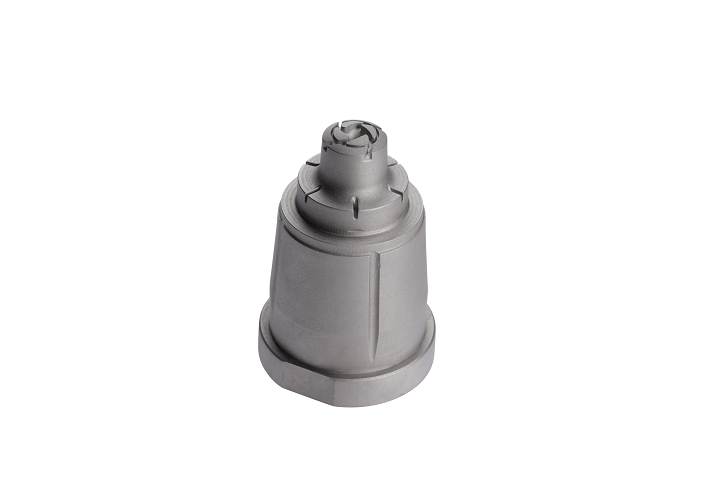California startup Mantle Inc., which came out of stealth mode this winter with its TrueShape hybrid bound metal printing (BMP) technology, has just announced a successful $25 million round of Series B financing, led by venture capital fund Fine Structure Ventures. With the $13 million in funding the startup raised earlier this year, this new round brings its total amount up to $41.5 million, and Mantle plans to use this latest financing to increase its software, materials science, manufacturing, and hardware teams, with an end goal of speeding up the development and installation of its first commercial systems this coming year.
According to the startup, its TrueShape technology works for multiple tooling applications in the $350 billion precision parts market, such as low volume industrial machinery and spare parts, high volume part production, and jigs and fixtures. Instead of focusing on printing end-use parts, Mantle is using its hybrid BMP solution to make the tools, dies, and molds that make the end-use parts.
“There are several things that differentiate us technically, including our ability to make very precise, accurate metal parts,” Paul DiLaura, Mantle’s Chief Commercial Officer, told 3DPrint.com. “But our greatest differentiation is our focus: we are exclusively focused on the tooling market and on helping toolmakers, molders, and OEMs cut lead times, reduce costs, and improve cycle times.”
As SmarTech Analysis recently reported, metal additive manufacturing activity in the first quarter of 2021 increased by about 11% globally in terms of total revenues, and if it stays on this path, should reach pre-pandemic levels by the end of the year. A company like Mantle, which is taking a different approach to the busy metal AM market thanks to its speed and precision, is well-positioned to help manufacturers digitize and change up their supply chains, while also reducing costs and lead times.
“Most of the products we use everyday are manufactured using the types of tools that Mantle prints. Our investors and customers are excited about the evolutionary and revolutionary nature of Mantle’s unique approach,” said Ted Sorom, Mantle CEO and Co-Founder. “Mantle allows companies to evolve with the manufacturing processes, materials, and supply chains they know and trust while realizing a revolutionary improvement in tooling lead time and cost.”
Fine Structure Ventures, the lead financer for Mantle’s recent Series B round, is affiliated with the parent company of Fidelity Investments, FMR LLC. Several other existing investors, including Corazon Capital, Foundation Capital, Future Shape, Hypertherm Ventures, and 11.2 Capital, joined Fine Structure Ventures in the financing.
“Fine Structure Ventures sees that a digital transformation is happening in the manufacturing industry,” explained Shyam Kamadolli, Managing Director at Fine Structure Ventures. “Mantle is helping manufacturers redefine how they bring products to market by reducing lead times and costs while implementing more digital, flexible, and local supply chains. We are impressed by the value that Mantle’s early customers have realized and look forward to supporting Mantle’s expected growth.”
But its latest funding isn’t the only good news Mantle is sharing—the startup also announced that its customers have produced over one million end-use parts using tool components 3D printed with its TrueShare solution. Tool components used to make end-use parts like, for instance, dishwasher components, medical devices, and deodorant packaging, can take a long time and a lot of money to fabricate, but with what Mantle calls its “unique combination of accuracy, surface finish, and multiple tool steel materials,” it should be possible for manufacturing customers to meet their tooling needs in less time, for less money.
One such example is an unnamed multinational medical device manufacturer, which used Mantle’s 3D printed tooling components to lower the lead time for a prototype tool from 12 weeks to just 4, and lower the cost by over 65%. The 3D printed molded components met the requirements for mechanical properties and dimensional accuracy, as well as surface finish requirements. In addition, global contract manufacturer Tessy Plastics, which specializes in custom automated assembly solutions and injection molding, used the startup’s 3D printed tooling components to make a production tool for a high-volume consumer product. The tool, which actually uses several 3D printed inserts, has successfully run over 400,000 cycles, and just like with the medical device manufacturer, all the molded parts met the company’s quality standards and requirements for surface finish and dimensional accuracy.
(Source/Images: Mantle)
Subscribe to Our Email Newsletter
Stay up-to-date on all the latest news from the 3D printing industry and receive information and offers from third party vendors.
You May Also Like
Precision at the Microscale: UK Researchers Advance Medical Devices with BMF’s 3D Printing Tech
University of Nottingham researchers are using Boston Micro Fabrication‘s (BMF) 3D printing technology to develop medical devices that improve compatibility with human tissue. Funded by a UK grant, this project...
3D Printing Webinar and Event Roundup: April 21, 2024
It’s another busy week of webinars and events, starting with Hannover Messe in Germany and continuing with Metalcasting Congress, Chinaplas, TechBlick’s Innovation Festival, and more. Stratasys continues its advanced training...
3D Printing Webinar and Event Roundup: March 17, 2024
It’s another busy week of webinars and events, including SALMED 2024 and AM Forum in Berlin. Stratasys continues its in-person training and is offering two webinars, ASTM is holding a...
3D Printed Micro Antenna is 15% Smaller and 6X Lighter
Horizon Microtechnologies has achieved success in creating a high-frequency D-Band horn antenna through micro 3D printing. However, this achievement did not rely solely on 3D printing; it involved a combination...
































